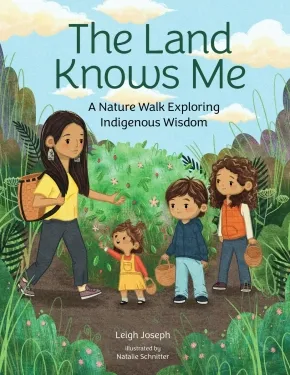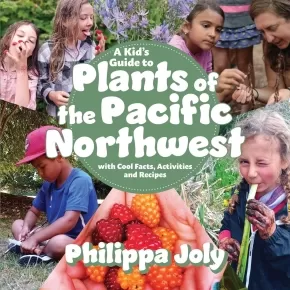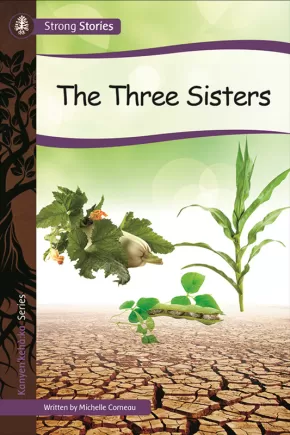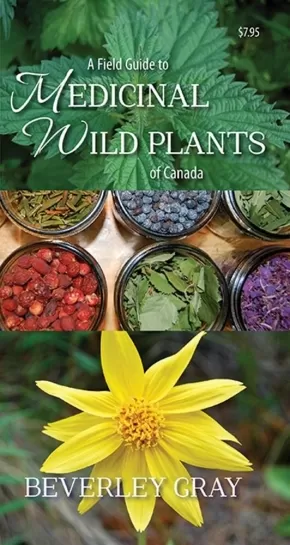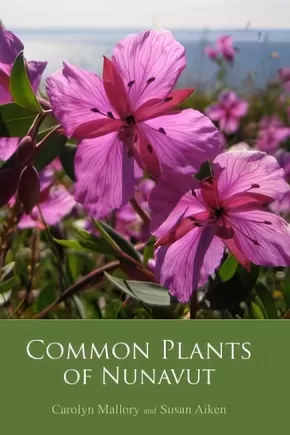
Ethnobotany
1
-
15
of
18 Results;
Sort By
Go To
of 2
The Cedar Mother
$24.95
Artists:
Format:
Hardcover
Text Content Territories:
Indigenous Canadian; First Nations; Gitxsan (Gitksan);
ISBN / Barcode: 9781774921586
Synopsis:
Synopsis:
From small sapling to towering giant, follow the long life of a cedar tree in this illustrated book for young scientists.
Step outside to explore the hidden mysteries of the cedar tree life cycle in this beautifully illustrated, engaging non-fiction book for young scientists ages 9 to 12.
Meet Nox Sim Gan, the cedar mother, whose life cycle spans centuries and whose roots anchor the landscape. The cedar mother plays a vital role in the ecosystem: offering shelter for birds in her strong limbs, providing refuge for small creatures beneath her bark, and healing the Gitxsan with a medicinal tea made from her soft, green leaves. She also creates the very oxygen that all land-dwelling creatures need to breathe.
Delve into the remarkable story of the western red cedar as you learn how she nourishes herself through an unexpected connection to salmon, the secret web of life that thrives beneath the ground, and how, at the end of her life, she leaves a final gift for the Gitxsan. This book invites young readers to discover the life of a tree that is much more than meets the eye, offering lessons in interconnectedness, and in wisdom passed down through generations.
Educator & Series Information
Recommended for ages 9 to 12.
Lexile measure: 1050L
This book is part of the Mother of Xsan series, which uses striking illustration and lyrical language to bring the poetry of the Xsan ecosystem to life. It is the eighth book in the series.
Additional Information
32 pages | 6.50" x 10.00" | Hardcover
A Kid's Guide to Plants of the Great Lakes Region: Including Southern Ontario with Cool Facts, Activities and Recipes
$26.95
Format:
Paperback
Text Content Territories:
Indigenous Canadian;
ISBN / Barcode: 9781998526109
Synopsis:
Synopsis:
A middle-grade-friendly introduction to flora of the Great Lakes Region, with outdoor activities, games and quizzes that make learning about nature fun! Great for families and educators.
Get dirty digging up roots. Crouch down to look closely at a carnivorous sundew dissolving a dragonfly. Make an elderberry concoction. Test your plant ID skills with a winter twig quiz. Make a soothing plantain salve to treat an itch. Learn which berries you can eat and which to avoid.
Time spent outdoors encourages children’s self-confidence and independence, increases attention span and physical well-being, and fosters care for the environment. With the increasing intrusion of technology into daily life, and the challenges of climate chaos, it has never been more essential for parents and educators to encourage kids to engage with the natural environment. Plants are everywhere, even in urban areas where parks, empty lots and backyards offer the opportunity to learn from and connect to nature.
Drawing on their years of experience as outdoor educators, co-authors Philippa Joly and Danielle Gehl Hagel feature fifty richly illustrated plant profiles, including information on identification and ecology, cultural uses, and fun activities—all in a way that is accessible and interesting to readers of all ages.
Educator Information
Juvenile Nonfiction.
Additional Information
224 pages | 8.50" x 8.50" | Paperback
The Land Knows Me: A Nature Walk Exploring Indigenous Wisdom
$25.99
Artists:
Format:
Hardcover
Text Content Territories:
Indigenous Canadian; First Nations; Salish; Coast Salish; Squamish;
ISBN / Barcode: 9780760392911
Synopsis:
Synopsis:
Through the Squamish language and cultural traditions, learn about Indigenous plant relationships and how we are all connected to nature through plant-based foods, medicines, and materials.
The best way to learn about plants is through observing and interacting with living examples. Join Held by the Land author Leigh Joseph and her children in The Land Knows Me, an educational, hands-on journey to discover all the wonderful uses and gifts of the plants around us. Through the Indigenous traditions of Squamish culture you’ll learn how to ground yourself on the land, how to introduce yourself in the Squamish language to your plant relatives, and the many teachings about plants, cultural stories, and learnings related to the flora seen on your walk.
This essential and colorful introduction to Indigenous plant knowledge includes informative sidebars, reflection questions, and plant names in both Squamish and English so children can learn a new language.
The Land Knows Me concludes with a 15 plant profile directory featuring detailed plant illustrations and kid-friendly botanical drawings to aid in learning about the many great uses for plants and the native history behind them. You’ll meet plants like:
- Ḵwiĺayus (kw-ill-eye-os), Red-Flowering Currant, Ribes sanguineum
- Ḵ’emeláý (k-em-ill-eye), Bigleaf Maple, Acer macrophyllum
- Séliýaý (s-elle-ee-eye), Oregon Grape, Mahonia nervosa
- Xápaýay (hey-pie-eye), Western Red Cedar, Thuja plicata
- Ḵwe7úpaý (kw-oh-pa-eye), Pacific Crabapple, Malus fusca
- And more!
The directory also includes important safety and proper harvesting information for parents who are looking for more opportunities to educate and engage with kids while getting to know the secrets of the land around us. Including mindfulness activities, how-to crafts, and yummy treats, The Land Knows Me calls you back again and again to learn something new with each engaging read!
Follow the stream, cross the field, and step into a forest full of rich, botanical diversity rooted in history and tradition.
Educator Information
Recommended for ages 6 to 8.
Additional Information
80 pages | 8.50" x 11.00" | Hardcover
A Kid's Guide to Plants of the Pacific Northwest: with Cool Facts, Activities and Recipes
$26.95
Format:
Paperback
Text Content Territories:
Indigenous American; Alaska Native; Native American; Indigenous Canadian; First Nations;
ISBN / Barcode: 9781990776212
Synopsis:
Synopsis:
A middle-grade-friendly introduction to Pacific Northwest flora, with outdoor activities, games and quizzes that make learning about nature fun! Great for families and educators.
Get dirty digging up roots. Crouch down to look closely at a carnivorous sundew dissolving a dragonfly. Munch some lemony-tasting miner’s lettuce. Go on a scavenger hunt for some of nature’s more surprising creations, like the arbutus tree, a sculpture of living copper. Make a soothing plantain salve to treat an itch. Learn which berries you can eat and which to avoid.
Time spent outdoors encourages children’s self-confidence and independence, increases attention span and physical well-being, and fosters care for the environment. With the increasing intrusion of technology into daily life, and the challenges of climate chaos, it has never been more essential for parents and educators to encourage kids to engage with the natural environment. Plants are everywhere, even in urban areas where parks, empty lots and backyards offer the opportunity to learn from and connect to nature.
Drawing on her years of experience as a herbalist and outdoor educator, author Philippa Joly features more than fifty richly illustrated plant profiles, including information on identification and ecology, uses in Coastal Indigenous cultures, and fun activities—all in a way that is accessible and interesting to readers of all ages.
Reviews
“This is an absolutely delightful book, dedicated to helping children and youth build relationships with the plants in their world. It is a rich compendium of plant portraits and descriptions, personal stories, recipes, games and hands-on activities—like making tea from Yerba Buena or making a root-digging stick of Oceanspray. Philippa’s obvious love of kids, plants and the natural world shines through—and it is catching!” — Nancy Turner, Professor Emeritus, University of Victoria, and author of Plants of Haida Gwaii
Educator Information
Recommended for ages 6 to 12.
Table of Contents
1. Indigenous Peoples of the Pacific Northwest Coast
2. Regions and Plants Covered by This Book
3. Plant Names and Language
4. Dos and Dont's of Wildcrafting Plants
5. Understanding Plant Families
6. Plant Guilds
7. Poisonous Plants
8. Invasive Plants
9. Plant Profiles
10. For Parents and Educators
Additional Information
232 pages | 8.50" x 8.50" | Paperback
Braiding Sweetgrass for Young Adults: Indigenous Wisdom, Scientific Knowledge, and the Teachings of Plants
$27.50
Artists:
Format:
Paperback
Text Content Territories:
Indigenous American; Indigenous Canadian;
ISBN / Barcode: 9781728458991
Synopsis:
Synopsis:
Drawing from her experiences as an Indigenous scientist, botanist Robin Wall Kimmerer demonstrated how all living things—from strawberries and witch hazel to water lilies and lichen—provide us with gifts and lessons every day in her best-selling book Braiding Sweetgrass. Adapted for young adults by Monique Gray Smith, this new edition reinforces how wider ecological understanding stems from listening to the earth’s oldest teachers: the plants around us. With informative sidebars, reflection questions, and art from illustrator Nicole Neidhardt, Braiding Sweetgrass for Young Adults brings Indigenous wisdom, scientific knowledge, and the lessons of plant life to a new generation.
Awards
- 2022 Publishers Weekly Best Book of the Year winner
- 2023 NSTA/CBC Outstanding Science Trade Books for Students K-12 winner
- 2023 Nautilus Book Awards winner
- 2023 The Canadian Children's Book Centre Best Books for Kids and Teens winner
- 2022 Kirkus Best Teen Books of the Year winner
- 2023 NSTA/CBC Outstanding Science Trade Books for Students K-12 winner
- 2023 Riverby Award winner
- 2024 Texas Topaz Nonfiction Reading List winner
Reviews
"Braiding Sweetgrass for Young Adults is my new favorite book! What a great way for young people (and anyone, really) to learn about our healing medicines. So many teachings within the pages. I love the mix of photos, illustrations, and text boxes filled with reflective questions and translations. I will be purchasing boxes of this incredible book to share with loved ones! Chii miigwech!"—Angeline Boulley, #1 NYT Bestselling author of Firekeeper's Daughter
Educator Information
Recommended for ages 12 to 18.
“The themes that are interwoven throughout Braiding Sweetgrass align beautifully with both middle school and high school curriculum around social and emotional learning and environmental science. This new edition will help affirm the identities and beliefs of Indigenous teens while also introducing non-Indigenous teens to Indigenous teachings and ways of understanding the natural world.” - Shaina Olmanson, Editorial Director for Young Adult Nonfiction at Lerner Publishing Group
Additional Information
304 pages | 5.50" x 8.25" | Paperback
Mino-te-mah-ti-zee-win, A Good Way of Life Colouring Book
$14.95
Artists:
Format:
Paperback
Text Content Territories:
Indigenous Canadian;
Grade Levels: Kindergarten; 1;
ISBN / Barcode: 9781927849705
Synopsis:
Synopsis:
The National Indigenous Diabetes Association (NIDA) envisions diabetes-free communities. Their mission is to lead the promotion of healthy environments and to prevent and manage diabetes by working together with people, communities, and organizations. NIDA Elders partnered with Kayla Perry, registered dietitian with the Diabetes Integration Project, and the Manitoba First Nations Education Resource Centre (MFNERC) to present this colouring book, which features some traditional plants and animals (Our Relations) from our Elders’ territories and the lands in between.
The purpose of this colouring book is to provide an easy-to-read, visual resource with practical guidance that children and caregivers can use to learn about nutritional information from traditional foods and plants. This resource also shares some teachings and stories attached to these medicines. Traditional foods are plants or animals that are indigenous to the land, meaning they existed naturally on the land before settlers arrived. Food in the form of these plants, fruits, vegetables, or animals is a gift.
NIDA would like to acknowledge that the work for this project took place in the traditional territories of the Dakota, Anishinaabe, Cree, Ojibwe-Cree, and Dene Peoples, and the homeland of the Red River Métis Nation.
Educator Information
Recommended by the publisher for grades 1 and under.
A Walk on the Shoreline
$12.95
Artists:
● Qin Leng
Format:
Paperback
Text Content Territories:
Indigenous Canadian; Inuit;
ISBN / Barcode: 9781772272697
Synopsis:
Synopsis:
Like A Walk on the Tundra, A Walk on the Shoreline introduces young readers to unique plants and animals found in the Arctic, as well as the traditional Inuit uses for the various species.
Young Nukappia can’t wait to get out to his family campsite on the shoreline. After spending all year in the south with his adoptive parents, Nukappia always looks forward to his summer visits with his birth family. After spending one night in town, Nukappia and his uncle Angu begin the long walk down the shore to the family summer campsite, where all of Nukappia’s cousins and aunts and uncles are waiting for him. Along the way, Nukappia learns that the shoreline is not just ice and rocks and water. There is an entire ecosystem of plants and animals that call the shoreline home. From seaweed to clams to char to shore grasses, there is far more to see along the shoreline than Nukappia ever imagined.
Reviews
“A Walk on the Shoreline also has a full-colour glossary of the plants and animals that Nukappia encounters along the way, including photographs, quick facts and traditional uses of the plant or animal. A Walk on the Shoreline is a well-researched, informative and engaging guide to the northern shoreline. The information is well-placed and woven through the text in an engaging manner. The reader gets to learn along with the protagonist, focusing more on the flora and fauna along the way than the rest of the northern setting. This focus on one detail of living in Nunavut works well; it doesn’t try and add too many details, but it provides a thread along the way.” — CM Magazine
“This reunion story features detailed character and scene-setting sketches by Qin Leng that help readers see how traditional Inuit communities live.” — Hakai Magazine
Educator Information
Recommended Ages: 5-7.
Additional Information
40 pages | 8.50" x 8.50"
Strong Stories Kwakwaka’wakw: Our Traditional Medicines
 $9.95
$9.95

Format:
Paperback
Text Content Territories:
Indigenous Canadian; First Nations; Kwakwaka'wakw (Kwakiutl);
ISBN / Barcode: 9781771743099
Synopsis:
Synopsis:
Kwakwaka’wakw (kwok-wok-ya-wokw) people believe that our human spirit must be taken care of. We have medicines for taking care of our body, mind, emotions, and spirit. What do you do to take care of yourself?
Educator & Series Information
Recommended for intermediate students (grades 4-6).
Our Traditional Medicines is part of the Strong Stories: Kwakwaka’wakw series. Strong Stories focus on different First Nation territories from across Canada and the United States. These stories reflect the belief that our stories are the roots of our people, our lands and our cultures. It is from our stories that we grow and become strong and proud.
Additional Information
16 pages | 6.00" x 9.00" | ISBN: 9781771743099
Muskgege – Carol’s Traditional Medicines
$16.95
Artists:
Format:
Paperback
Text Content Territories:
Indigenous Canadian; First Nations; Cree (Nehiyawak);
ISBN / Barcode: 9781927849378
Synopsis:
Synopsis:
“We are all visitors to this land, our land has so much to offer, our land is overflowing with the medicines our bodies need, but we are only passing through. With respect, our purpose is to watch, to learn, to grow, to love, to teach. Then we will return home.” – Caroline Sanoffsky
Muskgege is a written record of traditional knowledge, passed down through the generations. It features descriptions and illustrations of 36 wild plants that can be used to make medicines. It is a beautiful and compelling reminder of the important role nature plays in First Nations culture.
Educator Information
Grades 6 and under.
Strong Stories Kanyen’keha:ka: The Three Sisters
 $9.95
$9.95

Format:
Paperback
Text Content Territories:
Indigenous American; Native American; Haudenosaunee (Iroquois); Kanyen'keha:ka (Mohawk); Indigenous Canadian; First Nations; Haudenosaunee (Iroquois); Kanyen'keha:ka (Mohawk);
ISBN / Barcode: 9781771741194
Synopsis:
Synopsis:
A long time ago, the land was very dry and no plants could grow. The people had become very hungry. The Creator heard the people and made three plants - Corn, Beans and Squash. This Kanyen'kehà:ka (Gan-yeh-ga-ha-ga) story is about how the Three Sisters saved the people then, and are still feeding people today! The Kanyen'kehà:ka is one of Six Nations that together are the Haudenosaunee.
Educator & Series Information
The Three Sisters is part of the Strong Stories: Kanyen’kehà:ka series. Strong Stories focus on different First Nation territories from across Canada and the United States. These stories reflect the belief that our stories are the roots of our people, our lands and our cultures. It is from our stories that we grow and become strong and proud.
This resource is also available in French: Les Trois Sœurs.
Additional Information
16 pages | 6.00" x 9.00" | ISBN: 9781771741194
A Field Guide to Medicinal Wild Plants of Canada
$8.95
Format:
Pamphlet
Reading Level: N/A
ISBN / Barcode: 9781550176032
Synopsis:
Synopsis:
Nature heals! This compact field guide introduces readers to 26 common Canadian wild plants with extraordinary healing properties. Use arnica blossoms to heal muscle inflammation, improve digestion with chickweed and soothe a toothache with yarrow root--learning to identify and use wild medicinal plants is both fascinating and useful.
Each plant profile includes a colour photograph, identification and habitat information, as well as medicinal, cosmetic and culinary uses. Skilled herbalist Beverley Gray also includes tips on how to sustainably gather and safely use beneficial wild plants.
Additional Information
2 pages | 4.50" x 8.70" | 30 photographs | Pamphlet
Common Plants of Nunavut
$19.95
Format:
Paperback
Text Content Territories:
Indigenous Canadian; Inuit;
ISBN / Barcode: 9781927095195
Synopsis:
Synopsis:
Explore the fascinating world of Nunavut’s varied plant life in this richly visual, informative book.
Through beautiful photographs and a broad range of information including traditional knowledge about plant use compiled through interviews with Inuit elders readers will learn about the appearances, adaptations, life cycles, and habitats of the diverse array of plants that live in the North.
Far beyond a barren land of ice and snow, this book will introduce readers to the beautiful variations of plant life that abound on the tundra.
Additional Information
205 pages | 9.00" x 6.50"
A Field Guide to Trees of the Pacific Northwest
$7.95
Format:
Pamphlet
Reading Level: N/A
ISBN / Barcode: 9781550175721
Synopsis:
Synopsis:
This laminated guide features twenty-six native trees commonly found from Alaska to Oregon, providing common and Latin names accompanied by colour photographs of identifying features such as bark, leaves or needles, flowers, cones, seeds and fruit. Information on identification, range and an illustration of each tree's silhouette make it a snap to distinguish a shore pine from a western white pine or a trembling aspen from a paper birch. Also included are traditional uses and other interesting tree facts and lore. For example, did you know that yellow cedar can live up to 5,000 years? Or that the bigleaf maple flowers are edible? Next time you go for a hike, pay attention to the forest and the trees with one of these laminated guides slipped into your back pocket or backpack.
Additional Information
2 pages | 37.00" x 9.00" | color photographs and illustrations | pamphlet
Strong Readers Set A: Seasons (L10)
 $7.50
$7.50

Format:
Paperback
Text Content Territories:
Indigenous Canadian;
Grade Levels: 1;
ISBN / Barcode: 9781927571309
Synopsis:
Synopsis:
Level 10 Back cover book introduction: There are four seasons during a year, winter, spring, summer and fall. Which season do you think it is on the cover of this book? Which season is it outside right now?
Educator & Series Information
Seasons is part of the Strong Readers: Set A series. Set A includes a mixture of both fiction and non-fiction books, from levels 1 through 10, based on the appearance, behaviours, and habitats of frog, bear, eagle, and raven. The fictional stories are about frog, bear, eagle, and raven with their friends in their respective habitats.
The Strong Readers are a guided/leveled reading series chock full of science, numeracy, social responsibility, language arts and oral language teachings. Strong Readers are rich with scaffolded text features and have beautiful illustrations and photographs. The entire series is interconnected and follows the cultural values of frog, bear, eagle and raven throughout.
Guided Reading Level: 10
This resource is also available in French: Les saisons.
Additional Information
Book Dimensions: 6.5in x 5.5in | Pages: 16 | ISBN: 9781927571309
A Walk on the Tundra
$13.95
Artists:
● Qin Leng
Format:
Paperback
Text Content Territories:
Indigenous Canadian; Inuit;
ISBN / Barcode: 9781772271850
Synopsis:
Synopsis:
A Walk on the Tundra follows Inuujaq, a little girl who travels with her grandmother onto the tundra. There, Inuujaq learns that these tough little plants are much more important to Inuit than she originally believed.
In addition to an informative storyline that teaches the importance of Arctic plants, this book includes a field guide with photographs and scientific information about a wide array of plants found throughout the Arctic.
Reviews
This volume is a cross between a picture book, a story and a field guide to edible plants.... Authors, Rebecca Hainnu and Anna Ziegler, have worked on several educational publications. That background is apparent in this book. There are eighteen Inuktitut words, including 6 plant names, introduced in the text. They are explained and italicized when they are first introduced, for example “Nirilikkit – eat them”. The next time the word is used, it is assumed that the reader knows what it means.... [A]s a tool for building vocabulary, or as a storybook for students who have some familiarity with Inuktitut, this work would be excellent." – Sandy Campbell, The Deakin Review of Children’s Literature
Additional Information
40 pages | 8.50" x 8.50"
Sort By
Go To
of 2





